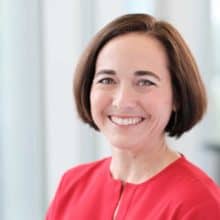Teacher leadership is a popular phrase in education conversations today. Teachers today, more than ever, are collaborating with other educators, parents, social workers, administrators and stakeholders to provide students with the best education possible. But, what is teacher leadership and how does an educator become a leader? Traditionally, a teacher leader was defined as an educator who transitioned to an administrative role outside his or her classroom. However, teachers have redefined the term in recent years because many excellent teachers had no desire to leave the classroom.
In 2014, ASCD (formerly the Association for Supervision and Curriculum Development) conducted a poll asking: “What do you think is the primary characteristic of a teacher leader?”
More than 54 percent of responses indicated that teachers are influencers and more than 24 percent saw teacher leaders as adept at improving instructional practices of their colleagues. In the same poll, less than 2 percent of responses characterized teacher leaders as those holding a formal role outside their classroom. This change in attitude has made it possible for teachers to be viewed as leaders and to hold formal and informal leadership positions while continuing to teach students on a daily basis.
As one of those teachers who did not wish to leave the classroom, I forged my own leadership pathways by finding opportunities that worked with my teaching. In 2013, I was selected to participate in the Kenan Fellows Program for Teacher Leadership at NC State University. It was recommended to me by a science colleague and a personal friend who mentored me when I was completing my National Board certification in 2008. The Kenan Fellows program is the largest STEM leadership program in North Carolina and I believed I could gain science and content experience as well as leadership development from the program. Being selected was a huge confidence booster because I was selected based on my accomplishments and my interview, rather than who I knew or simply being in the room at the time a willing body was needed.
The experience was a powerful piece of professional development in my career. I learned cutting edge research on biofuel production and wrote curriculum to incorporate the research into my classes. I was introduced to other passionate educators, allowing me to build my professional network statewide. I wrote about my work and shared it with other educators at the NC Science Teachers Association annual conference. Taking these steps for the first time with the support of Kenan mentors, fellows and alumni was easy, and I felt confident through the entire year-long fellowship. Since my Kenan year, I have applied and been selected as a NC Teacher Voice Fellow with Hope Street Group.
Just as the ASCD survey reflected, my outside fellowships have allowed me to have an influence on my school culture and to share my experiences with other educators. In 2017, the Kenan Fellows Program created a one-day leadership symposium for teachers in Eastern North Carolina. The professional development symposium was planned and facilitated by educators in the Kenan Fellows alumni network.
As one of the presenters, I shared experiences that defined my teacher leadership development, all while continuing to teach. We had excellent brainstorming about the qualities of teacher leaders and self-assessment of leadership roles in many areas of education. The ability for teachers to embark on their own leadership growth must continue. Teachers need to evolve and grow professionally, just as our doctors or engineers do.
I am in the classroom today because others gave me a chance to learn and grow with my students. I am a teacher leader because I found professional development to support my desire to make a difference in my school.
My journey as a Kenan Fellow has now come full circle, in that I returned the information and support I received in order to empower other educators to search out their own leadership opportunities.



